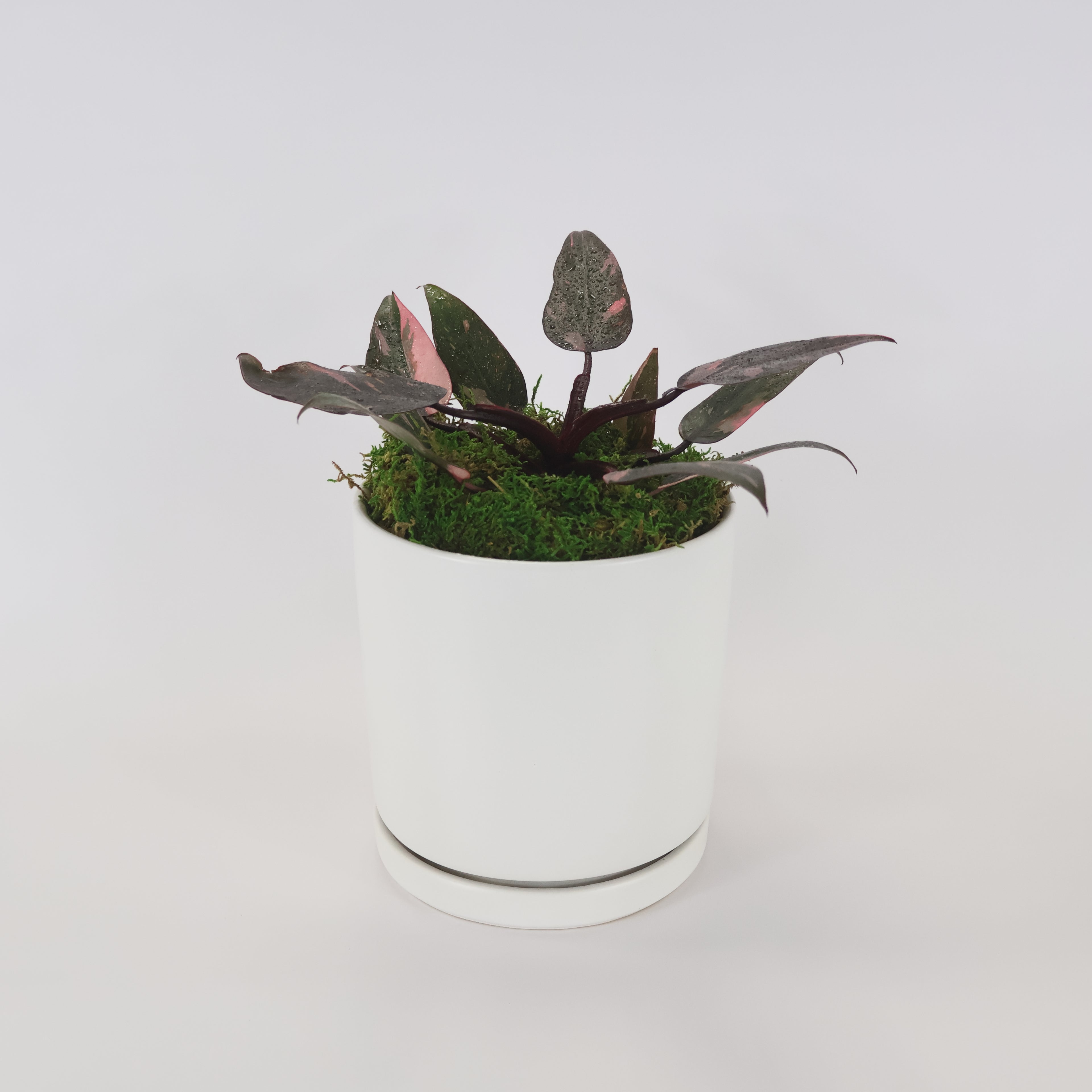

Care Guide
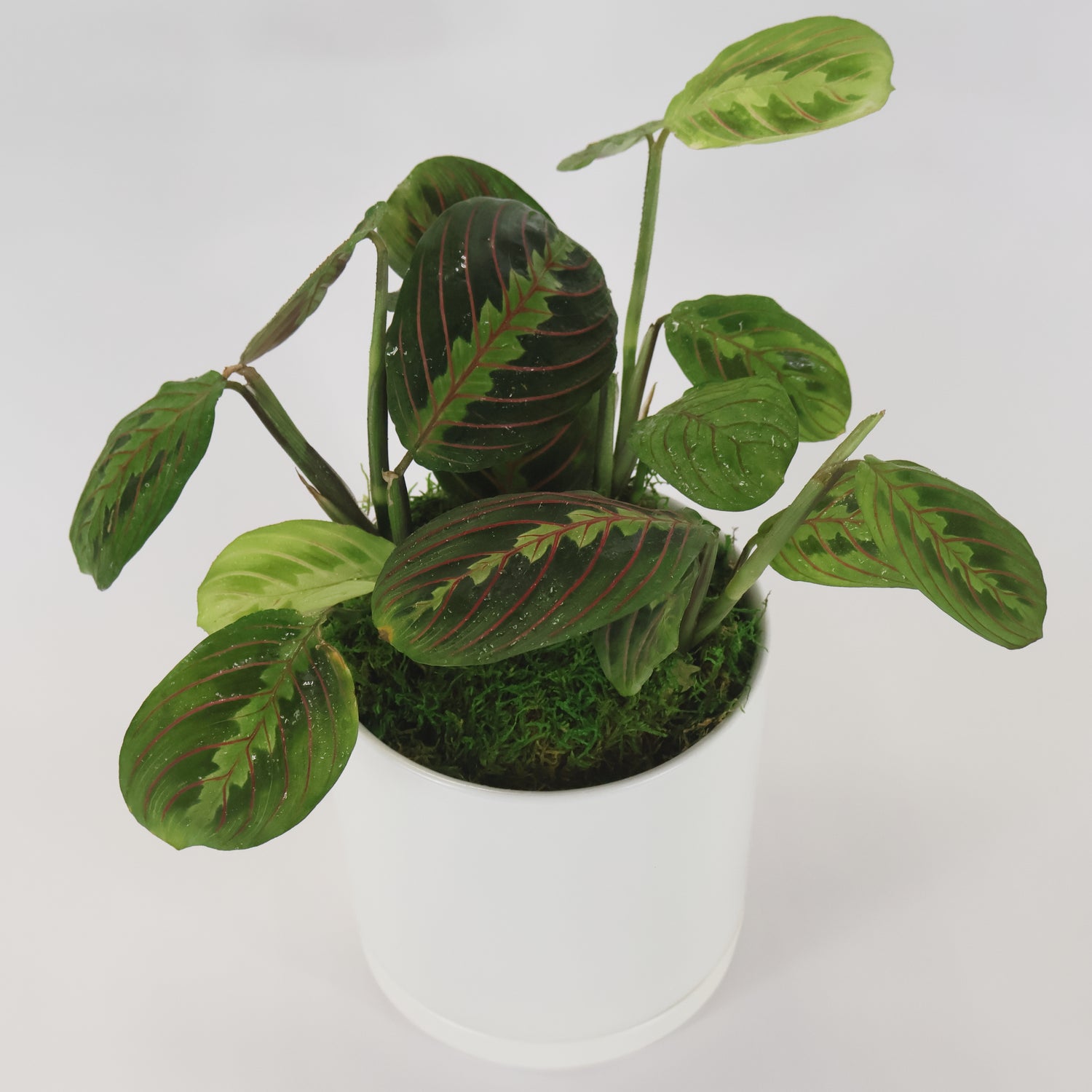
Burgundy Red Prayer Plant
To care for the burgundy red prayer plant as an indoor houseplant, place it in a location with bright, indirect light, as direct sunlight can cause leaf scorch and fading of its vibrant colors.
Water approximately once every five to seven days, depending on temperature, humidity, and light levels. Keep the soil consistently moist but not soggy during the growing season (spring through autumn). In winter, reduce watering slightly, allowing the top inch (2.54 cm) of soil to dry out between waterings. This plant thrives in high humidity; to achieve this, mist the leaves regularly.
Ideal temperatures range between 65°F and 70°F (18°C to 21°C), and the plant should be protected from drafts and sudden temperature changes.
There is no need to keep this plant out of the reach of pets.
Sources:
New York Botanical Garden: Prayer Plant (Maranta leuconeura)
North Carolina State University Extension: Maranta leuconeura

Green Prayer Plant
To care for the green prayer plant as an indoor houseplant, place it in a location with bright, indirect light, as direct sunlight can cause leaf scorch and fading of its vibrant colors.
Water approximately once every five to seven days, depending on temperature, humidity, and light levels. Keep the soil consistently moist but not soggy during the growing season (spring through autumn). In winter, reduce watering slightly, allowing the top inch (2.54 cm) of soil to dry out between waterings. This plant thrives in high humidity; to achieve this, mist the leaves regularly.
Ideal temperatures range between 65°F and 70°F (18°C to 21°C), and the plant should be protected from drafts and sudden temperature changes.
There is no need to keep this plant out of the reach of pets.
Sources:
New York Botanical Garden: Prayer Plant (Maranta leuconeura)
North Carolina State University Extension: Maranta leuconeura
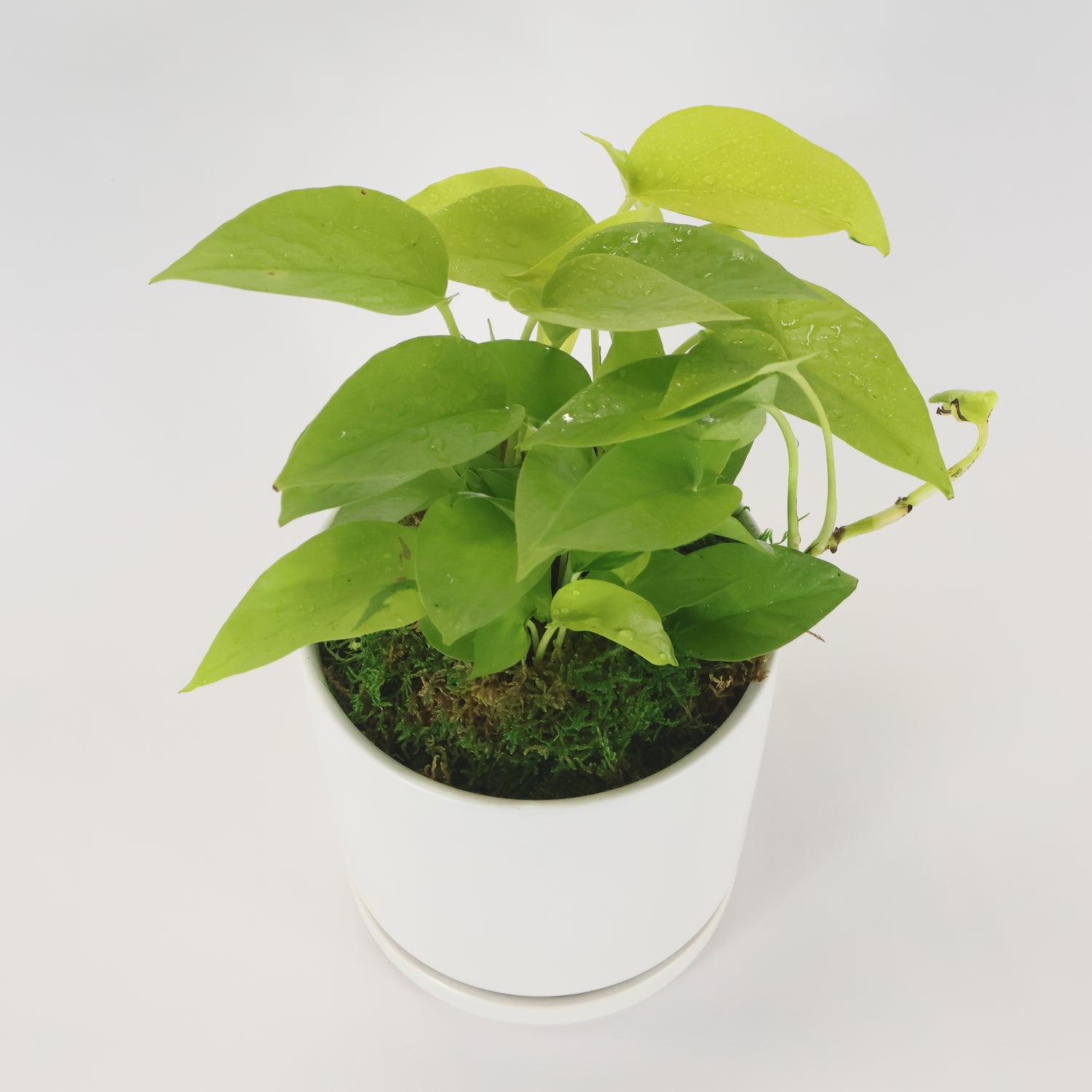
Neon Pothos
To care for a Neon Pothos as an indoor houseplant, place it in bright, indirect light to maintain its vivid foliage; however, it can tolerate lower light conditions, though growth may slow.
Water when the top two to three inches (5.08 to 7.62 cm) of soil feel dry, which is approximately every five to seven days. This plant thrives in average household temperatures between 65°F and 80°F (18°C to 27°C) and benefits from higher humidity levels, though it can adapt to normal indoor humidity. Regular pruning can help maintain a bushy appearance and control its size.
Please keep this plant out of the reach of pets.
Sources:
Missouri Botanical Garden: Epipremnum aureum 'Neon'
University of Wisconsin-Madison Division of Extension: Pothos, Epipremnum aureum
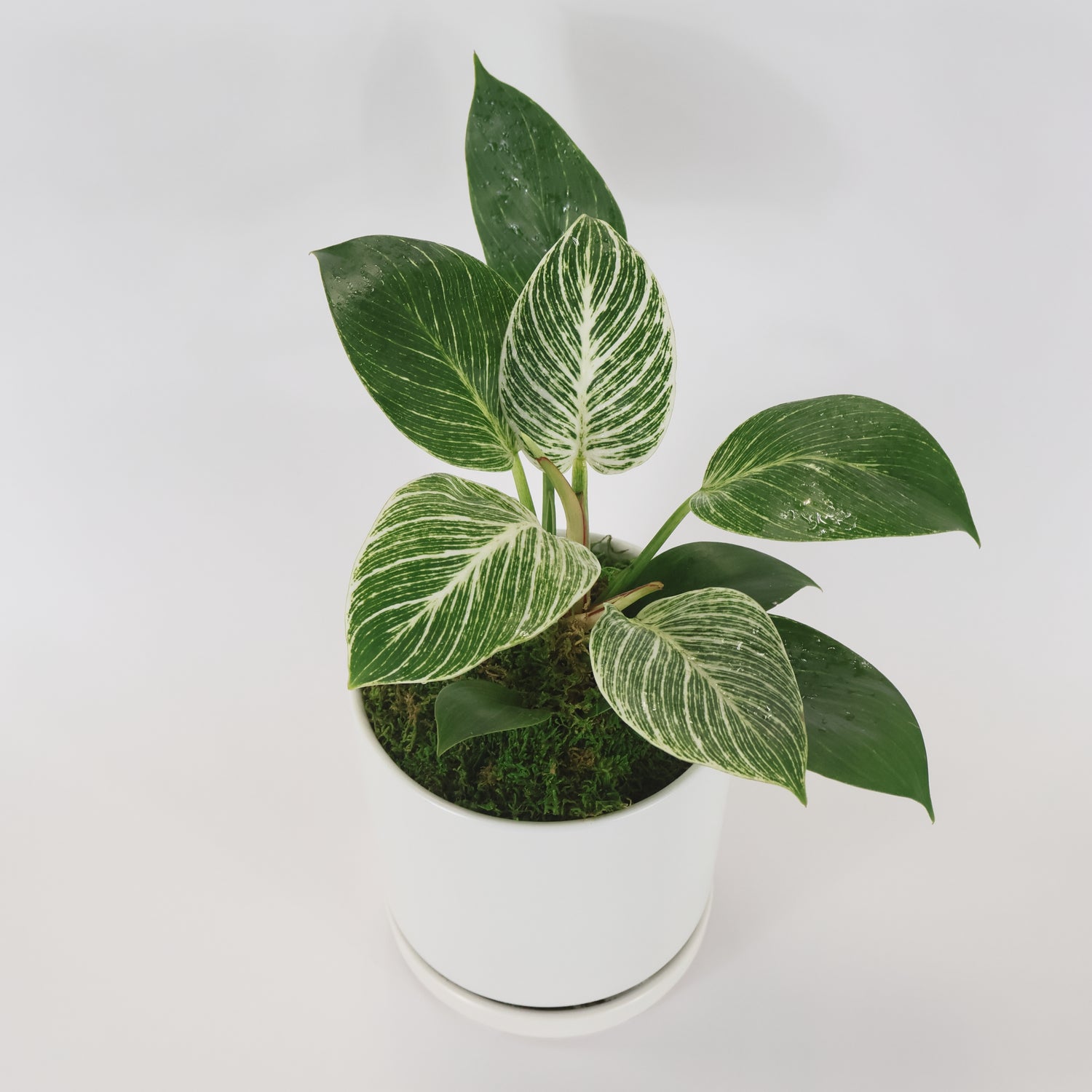
Philodendron ‘Birkin’
Caring for a Philodendron 'Birkin' involves providing bright, indirect light to maintain its vibrant leaf patterns, as direct sunlight can scorch the foliage.
Water when the top inch (2.54 cm) of soil feels dry, which is approximately every seven to 10 days. Ideal temperatures range between 65°F and 85°F (18°C to 29°C), and while the plant enjoys high humidity, it can adapt to average household levels.
Pruning is not strictly necessary but can help maintain shape and encourage fuller growth.
Please keep this plant out of the reach of pets.
Sources:
North Carolina State University Extension: Philodendron 'Birkin'

Philodendron ‘Pink Princess’
Caring for a Philodendron ‘Pink Princess’ involves providing bright, indirect light to maintain its vibrant variegation, as insufficient light can cause the pink hues to fade.
Water when the top inch (2.54 cm) of soil feels dry, which is approximately every seven to 10 days. Ideal temperatures range between 65°F and 80°F (18°C to 27°C), and while the plant enjoys high humidity, it can adapt to average household levels. Pruning is not strictly necessary but can help maintain shape and encourage fuller growth.
Please keep this plant out of the reach of pets.
Sources:
Missouri Botanical Garden: Philodendron 'Pink Princess'
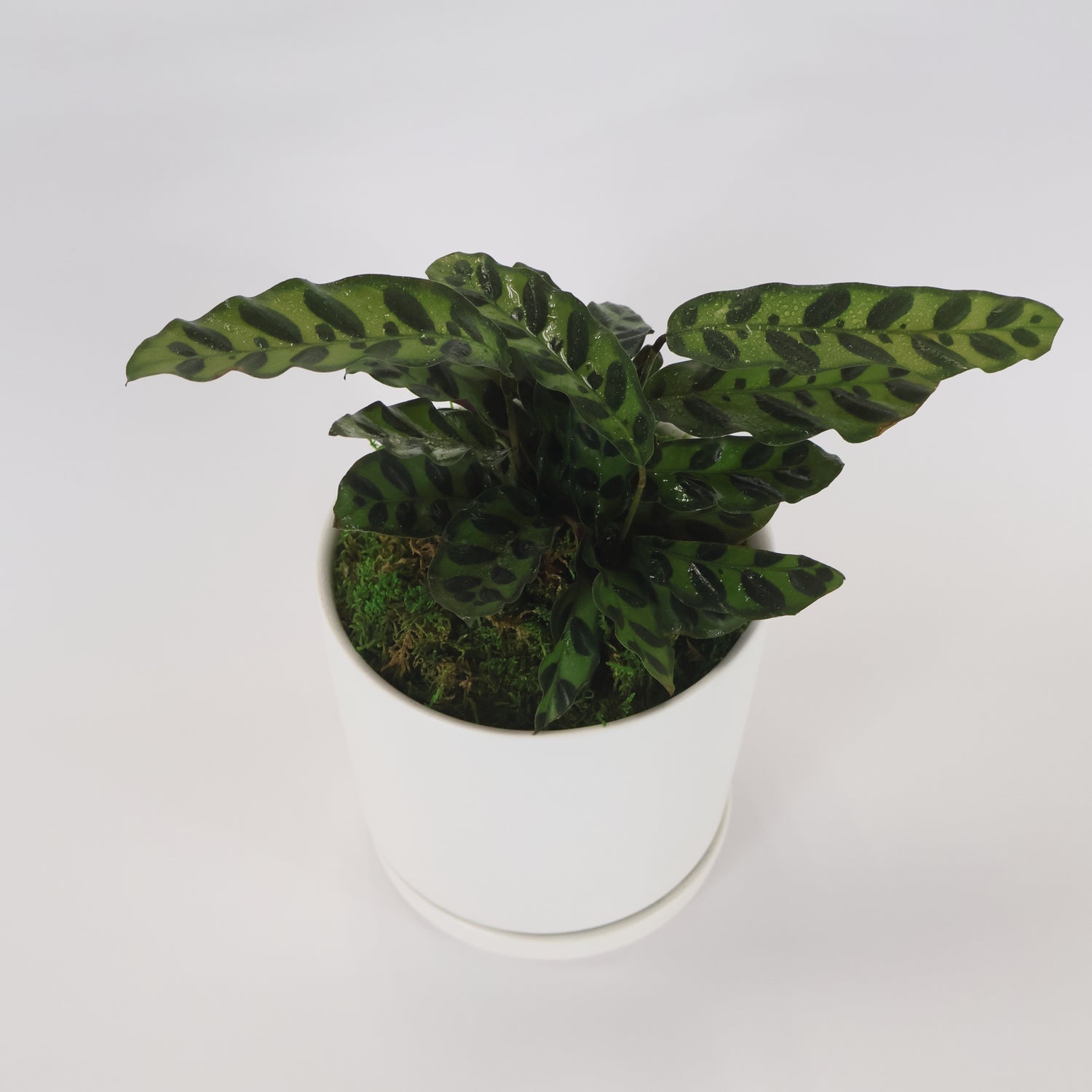
Rattlesnake Plant
As an indoor houseplant, the rattlesnake plant flourishes in bright, indirect light, mimicking its natural habitat under the forest canopy. Direct sunlight can scorch its leaves, so it is best placed away from harsh sun exposure.
Water when the top one to two inches (2.54 to 5.08 cm) of soil feel dry to the touch. This typically means watering once a week in warmer months (spring and summer) and every 10 to 14 days during cooler months (fall and winter), depending on humidity and temperature levels in your home. Regular misting can be beneficial.
Ideal temperatures range between 65°F and 75°F (18°C to 24°C), and the plant should be protected from drafts and sudden temperature changes.
The rattlesnake plant exhibits nyctinasty, a behavior where its leaves raise and lower in response to light, adding a dynamic element to its presence in indoor spaces.
There is no need to keep this plant out of the reach of pets.
Sources:
Missouri Botanical Garden: Calathea lancifolia (Goeppertia insignis)
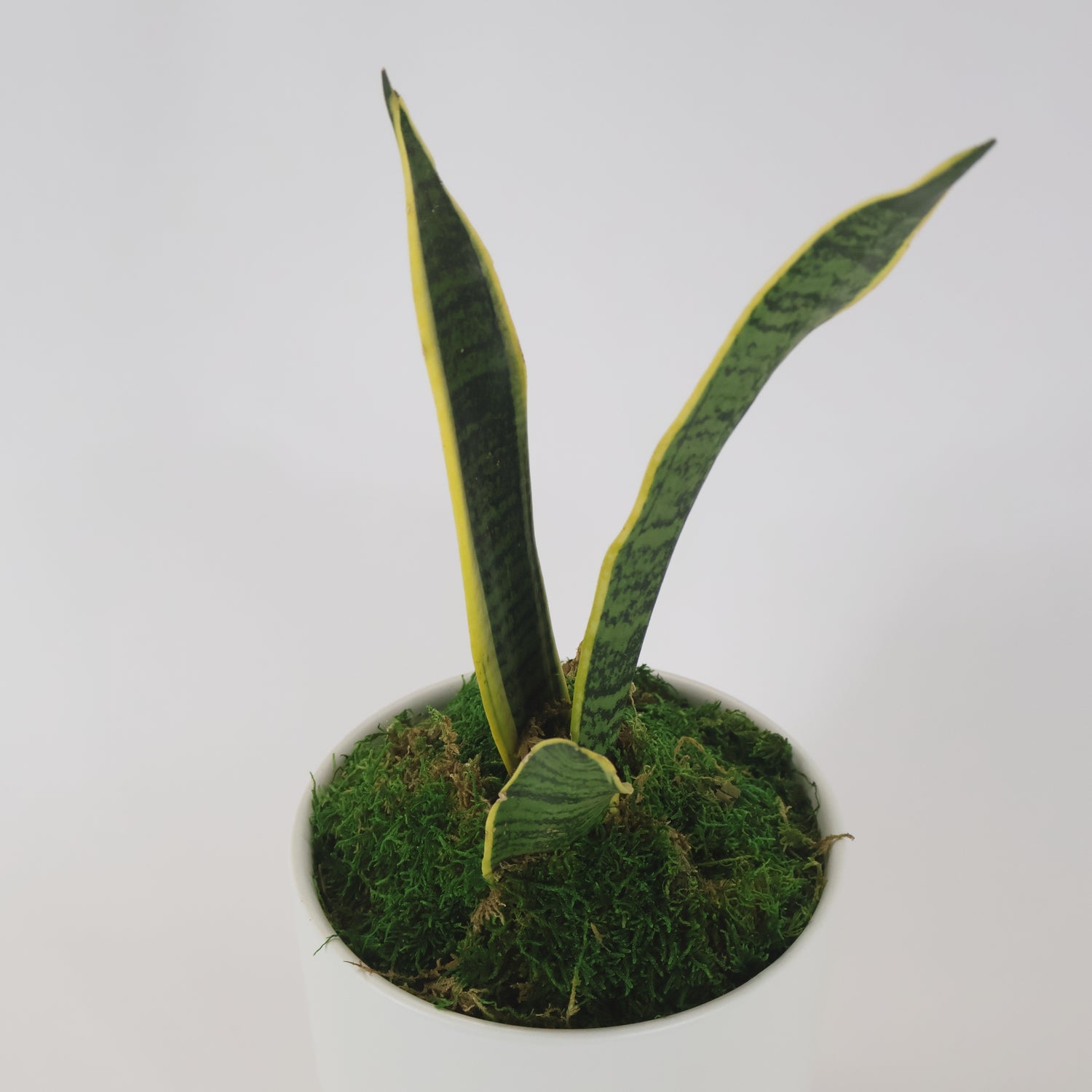
Snake Plant
As an indoor houseplant, the snake plant is renowned for its hardiness and minimal care requirements. It thrives in a variety of light conditions, from low to bright indirect light, though brighter light can enhance growth and leaf coloration.
Watering should be infrequent; allow the soil to dry out between waterings to prevent root rot, typically watering every two to six weeks depending on the environment.
The plant prefers warm temperatures and should be kept away from drafts or temperatures below 50°F (10°C). Occasional wiping of the leaves with a damp cloth will keep them free from dust.
Please keep this plant out of the reach of pets.
Sources:
Royal Botanic Gardens, Kew: Snake plant - Dracaena trifasciata
Joy Us Garden: Snake Plant Care: How to Grow this Diehard Houseplant
